A customer experience management framework brings discipline to your program. When you need to make tough decisions, your framework helps you focus on what matters most.
Our research shows that only 20% of companies know how their experience programs add to business growth, and even fewer are actively driving revenue outcomes.
In this article, alongside five alternatives, we introduce the Account Experience (AX) Framework. AX looks at customer experience through the lens of revenue retention and growth outcomes.
It's a step-by-step pathway from A (no CX program) to B (a CX program that rescues revenue and drives referrals and upsells from a happy customer base).
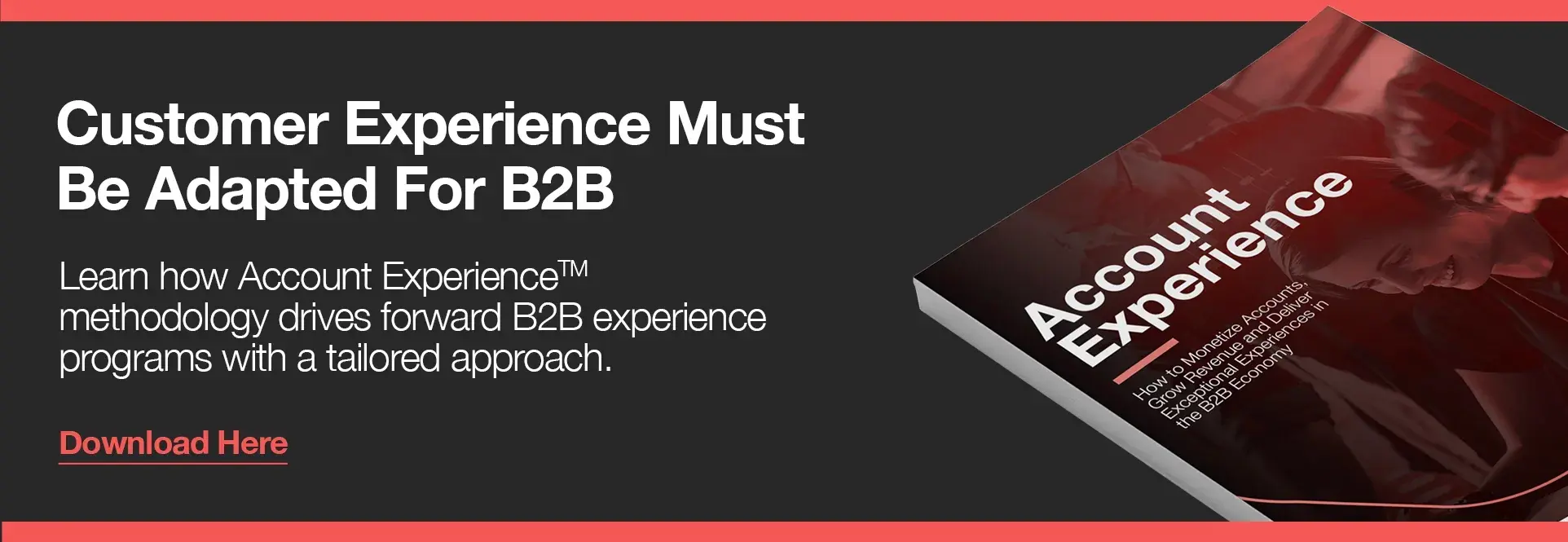
What is a Customer Experience Management Framework?
A customer experience management framework is the model, strategy, or structure you use to measure, analyze, and improve your customer experience. It aims to help you make better decisions, prioritize what’s effective, leverage your strengths, and convey your value.
The best CXM models will provide a lens through which you can take action that truly matters to business growth. In this sense, an impactful CXM framework will help you prioritize experience projects that most influence revenue outcomes—fundamentally why any business department exists.
For example, with our customers, we operate an adapted Net Promoter program that’s Monetized™. Alongside experience software that interlinks account revenue data with NPS scores, we provide a framework that encourages decision-making through the lens of “what actions will rescue or drive the most revenue?”
We’ll explain this approach further below, but we encourage every experience professional to think in this way. When one of your customer accounts represents $1m in annual business, and another represents $20k, which account is most important? Which do you want to listen to more closely?
By connecting the drivers of ‘NPS Detraction’ in the context of the account’s value, you gain a clear picture of how much revenue is at-risk and thus where to apply your attention. One great example of this comes from SimpleWays, which was blindsided by the loss of one of its largest customer accounts ($1m), despite working hard on their CX.
While a revenue and growth foundation might sound like a core feature of any CXM program, it is often forgotten in B2B experience programs. Our research shows that 70% of companies aren’t using a CXM framework that links their CX data to their revenue.
When done right, a CXM framework will do the following:
Organize your experience efforts so they focus on revenue growth (both through revenue rescue and through referrals and upsell opportunity creation).
Drive a deep understanding of customer behavior through better measurement techniques.
Create organizational buy-in by showing clear ROI from experience efforts.
Most CXM frameworks focus on experience improvement but fail to offer clear action points at each stage of your program’s lifecycle.
Download our visionary whitepaper here to understand in detail how to monetize your Account Experience. We explain how to build and execute a revenue-growth-driving experience program in B2B and B2B2C channels.
What Makes a Good CXM Framework?

In our recent article on Earned Growth, we discussed the fundamental elements of a successful B2B experience program. Your experience management framework must incorporate all three.
These three circles of influence underlay every successful program:
Power: You need buy-in from the C-Suite, Mid-Management, and Frontline.
Execution: Action cannot sit siloed in one department. Closing the feedback loop and enacting other CX change must involve teams across an organization. This is where AX software like CustomerGauge plays an important role—empowering teams with tools to take action.
Culture: Your program needs a life of its own. It needs to be bigger than one diligent team, and the mindset must be adopted company-wide.
With that in mind, a good CXM framework sets you up to measure and act on customer feedback in the best way possible, while also continuously winning buy-in from all stakeholders that need to be involved.
Here’s where it should focus:
Measure enough feedback from the right people at the right frequency in the right way.
Offer flexibility and autonomy. A framework, crucially, is not a plan. It shouldn’t be prescriptive, too rigid, or too cumbersome. Instead, all employees should enjoy some autonomy—at all levels of the business—and have flexibility in their processes.
Serve insights to your frontline teams. Your account managers should be in the know in real-time about unhappy or happy accounts.
Focus on ROI and provide reporting that proves it.
Link up CX to revenue. We’ll say it again: your CXM framework won’t reach its full potential unless it’s connected to your bottom line.
In the following sections, we will expand on our Measure, Act, Grow CXM framework that aims to help you create an experience program that drives revenue outcomes for your business.
Account Experience™ Model—Measure, Act, Grow
To quote our 118-page whitepaper on the Account Experience (AX™) framework, “AX is the intersection between experience feedback management, monetization, and account-based methodologies.”
At its core, AX™ is a response to a significant lack of vision on how Net Promoter should be adapted to B2B organizations. We frequently saw large enterprises using NPS in the wrong ways—to collect insights for research but then never using them.
We also saw many large enterprises desperately trying to collect customer feedback, but often only doing 10-20 customer interviews per year.
AX™ provides a systematic approach to collecting feedback from all your customers and using it to drive real, impactful change that helped sales and account teams rescue revenue and get more referrals and upsells.
In short, AX offers an action-based path to building a revenue engine powered by Earned Growth.
How the AX framework works
AX rests on three core elements: Measure, Act, Grow.
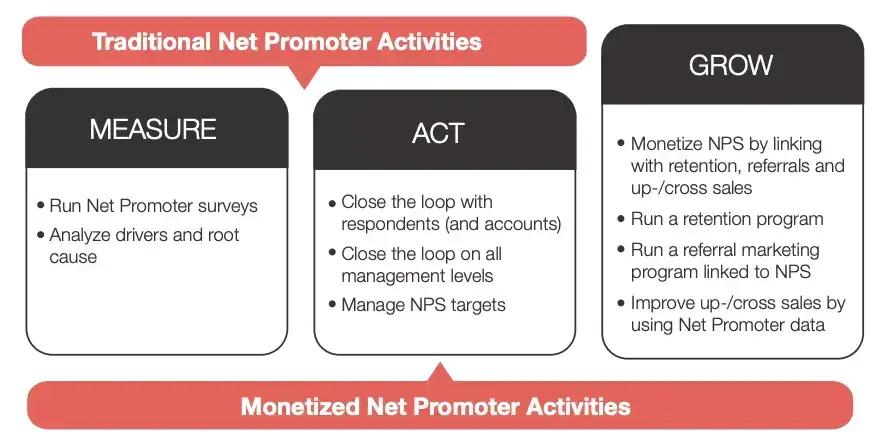
The AX framework has been continuously improved over the years of working with clients like Coca-Cola and DHL. It leverages Monetized™ NPS alongside other vital experience metrics to improve B2B CX and Revenue Lifecycle Management (read more on page 34).
💡 This is the real framework Coca-Cola uses to manage its supply-chain experience program—see it on their website here.
Let’s focus on Measure, Act, Grow for a moment. These are three core elements of an experience program and we have several best practices for all three, which we break down below.
In the Measure stage, you must get right the who, what, when, how, and why of surveying customers.
In the Act stage, you must get right how and how quickly you act upon feedback. It makes all the difference in the world to close the loop on customer feedback swiftly.
In the Grow stage, you lean into revenue rescue processes and Promoter activation to actively build revenue through experience. This is where savvy experience leaders focus because it shows their department as the revenue leader it can be.
Before we deep dive into each stage, use this decision tree to decide which stage you should focus on.
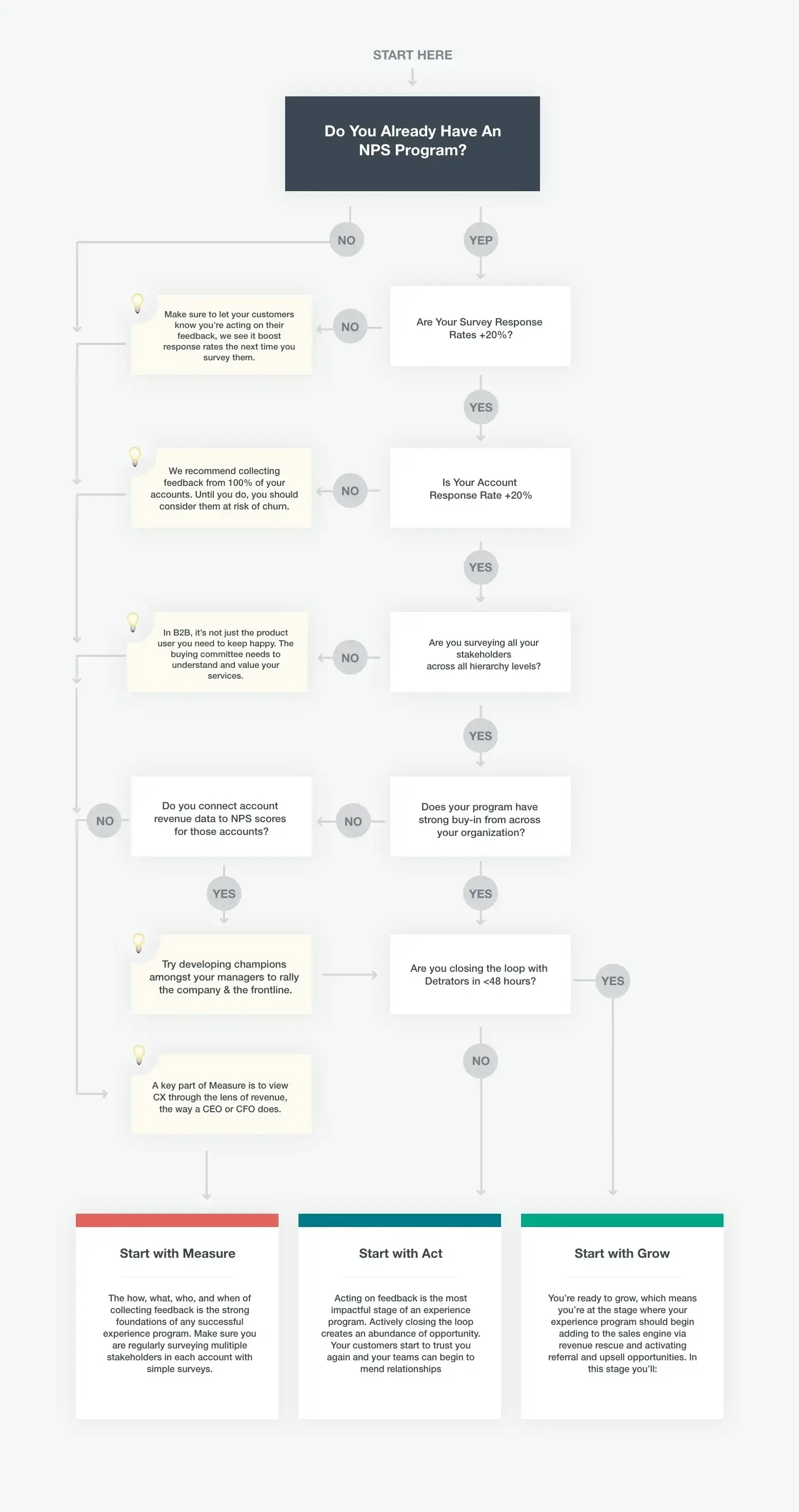
1. Measure
Measuring NPS is straightforward. Begin by asking your customers a simple question:
“On a scale from 0 to 10, how likely is it that you would recommend our company/product/service to a friend or colleague?”
Then, on that scale, categorize your customers into Promoters (9-10), Passives (7-8), and Detractors (0-6). You want the number of promoters—those customers that would recommend your brand—to be high while keeping your detractors to a minimum.
AX™ has clear guidelines for the Measure stage. There are three fundamental measurement tips to get in place for a successful AX-led experience management program:
Response rates: Low response rates = hardly any feedback = unrealistic of revenue risks. I talked to a VOC leader last week and he told me before they started using AX, they only did 30 in-person interviews per year. Now they have 1000s of customers giving feedback each quarter. (Learn how to improve your response rates here).

Survey multiple stakeholders: B2B buying processes are long and complex. You need to make sure you're measuring feedback from frontline users, middle management, and C-suite to adequately ensure your revenue is safe.
Maximize account coverage: Due to large deal sizes in B2B and B2B2C channel management, every customer counts. Sample sizes are not enough. To quickly identify churn risks and ensure your revenue base is healthy, you need to aim for 100% account coverage—which means collecting feedback from every customer. Learn how to maximize coverage here.
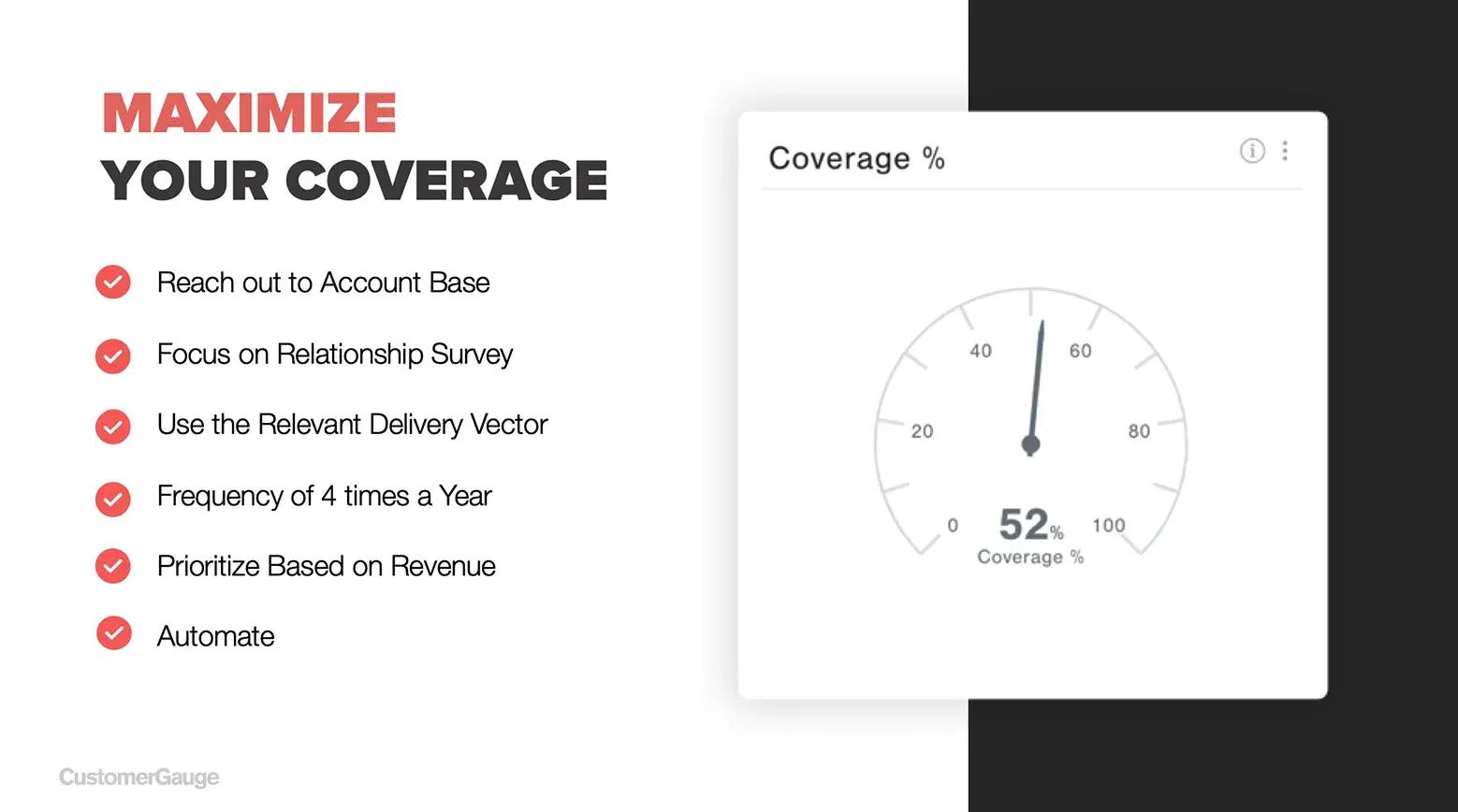
2. Act
Based on your measured results, the next stage of your process is to act. There are two main tasks here: closing the loop and optimization.
Close the loop. First, action means addressing the issues that bring your CX down. As we said above, this demands flexibility. Customers don’t all want the same thing—and different levels of your staff can’t respond in the same way.
The faster you close the loop the better, our research shows that closing the loop in under 48 hours has the highest impact on customer retention (read more in our CX benchmarks report).
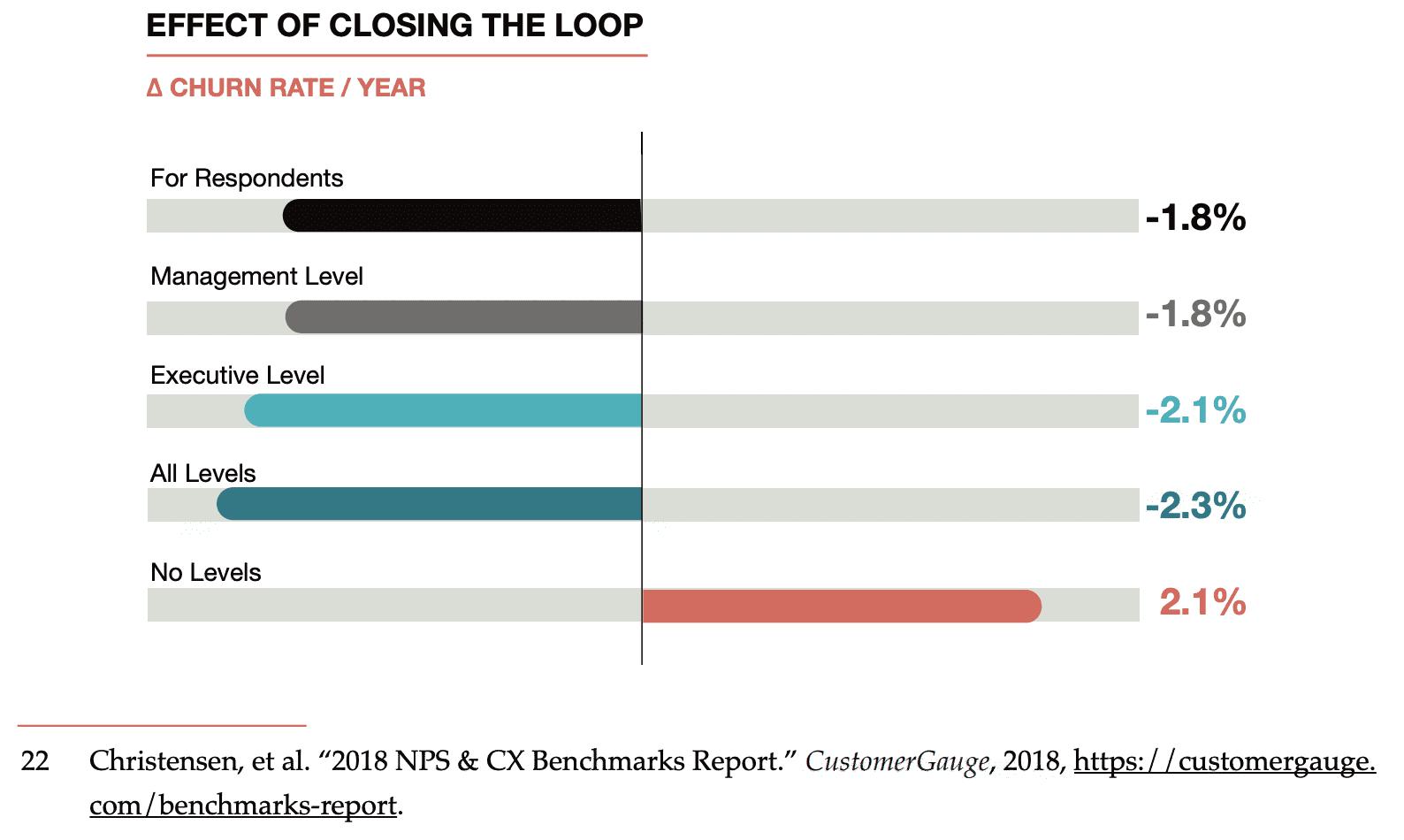
In a recent presentation at our Monetize conference, CustomerGauge CEO Adam Dorrell set forth that companies should be closing the feedback loop within 48 hours for 100% of negative feedback.
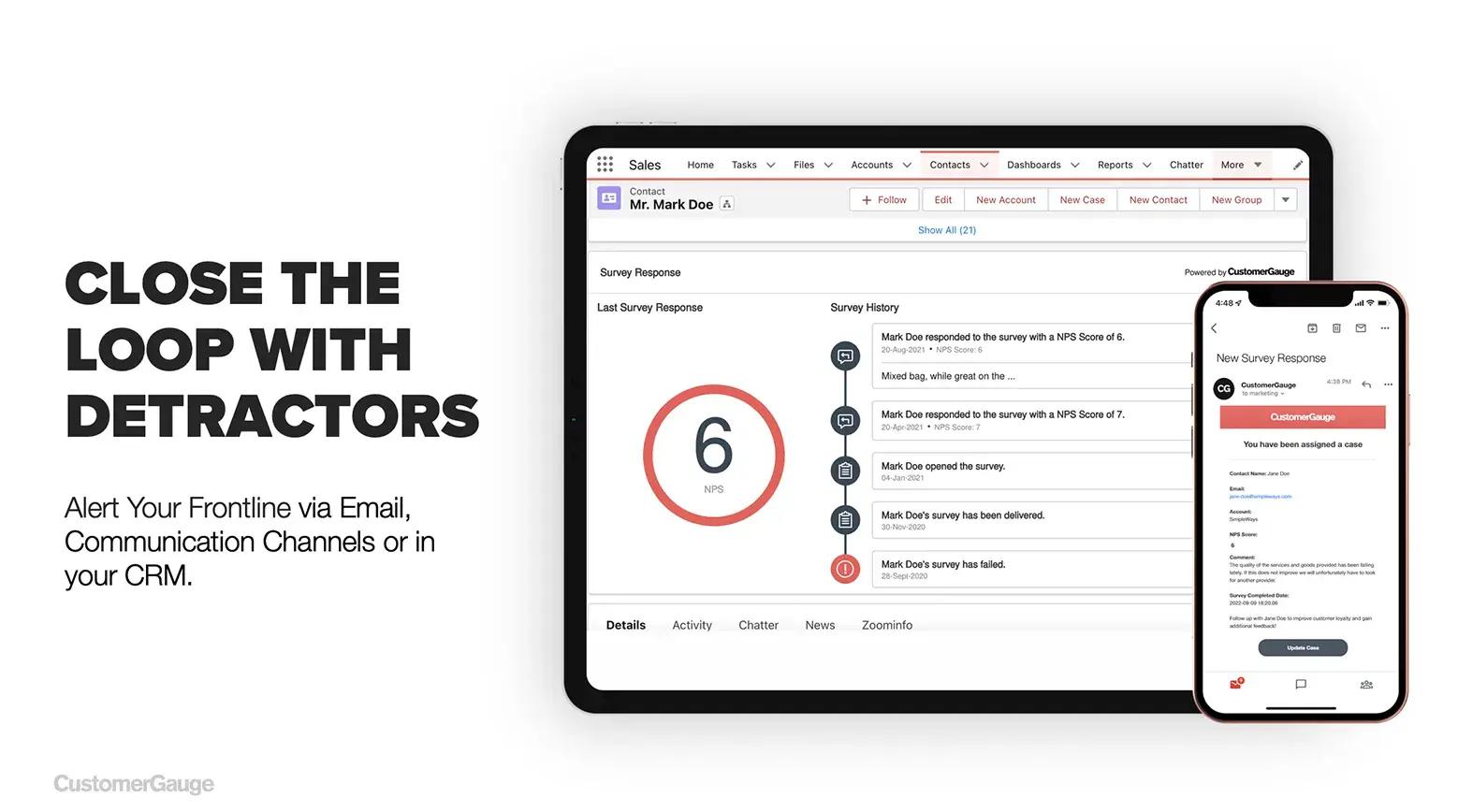
As he notes, this demonstrates the strength of your internal culture of customer-centricity.
Optimize. Optimizing means setting targets and improving toward those goals. According to our research, companies that set NPS targets to grow twice as fast as those that don’t.
Many companies stop here. But, they leave serious growth opportunities on the table. AX™ users continue to step three.
3. Monetize & Grow
Now it’s time to put your efforts toward growth. There are so many things you can do here. While that will depend on your individual customers and precise business needs, try the following:
Monetize: With monetized NPS, you’ll have the power to understand the value of your different accounts and their impact on your bottom line. When monetizing your CX, aim to be able to see how an increase of one NPS score impacts your revenue.
Identify which customers are at-risk: Knowing which customers are most likely to churn is the key task of your retention strategy. Close the loop with these customers quickly to drive retention—often customers just want to know they’re being listened to.
Identify opportunities for referral and upsell: A key part of the Net Promoter System is identifying your promoters. Customers that leave a score of 9 or 10 are ready to put their reputation on the line for you and refer new business to you—grow faster with a strong referral marketing plan.
Make smarter, targeted business decisions: Drive retention, repurchases, and referrals by recognizing the specific value of drivers. Studies show that 80% of profits come from 20% of customers—meaning focusing your efforts on the CX issues impact that 20% will have the largest impact on revenue growth.

With CustomerGauge, this becomes easy. By implementing CustomerGauge’s CX program, SmartBear brought in $6 million in referrals in just 18 months.
Additional reading:
Check out our SalesForce integration to see how we help Account Managers build better relationships.
Account Experience drives market share growth in this one sheeter
5 More Customer Experience Management Models To Consider
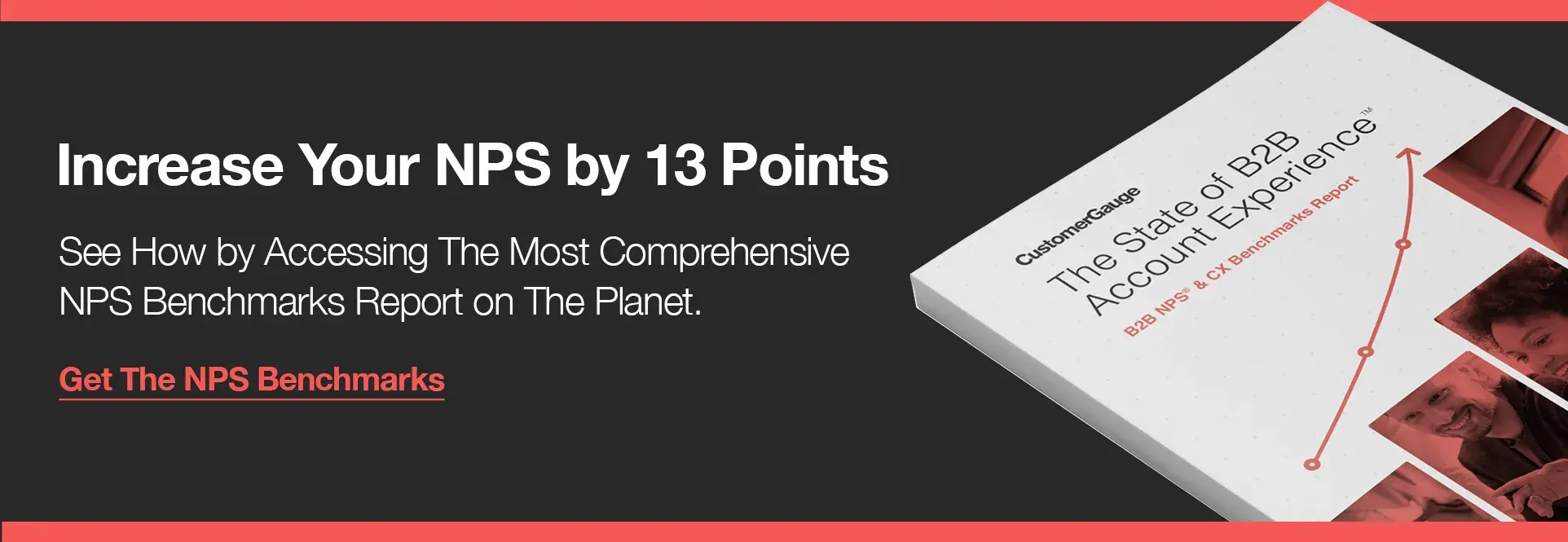
CustomerGauge’s Account Experience™ framework is not the only CXM model out there. But in our focus on monetized NPS, we are the most committed to improving your bottom line.
Here are some other customer experience management models to consider:
1. 5 Category Framework
The 5 Category Framework is a customer experience management model based on 5 central focuses: senses, processes, communication, expertise, and relationships.
Each of these categories has an impact on your customer's experience—from the visual impact of your brand (senses) to the way that you nurture loyal customers. According to this model, your task is to optimize the impact of each of these categories on your customers.
It's an important, insightful model. But by not being explicit about revenue, it doesn’t have much to say about action toward growth.
2. CX Operating Model (Deloitte).
Alternatively, Deloitte’s CX model identifies four strategic areas to improve your customer experience:
Structures and functions. For Deloitte, this means improving CX delivery and design, but also operational enablement—namely, the teams that support that delivery.
People and talent. The way your teams are organized and work together can make a big difference to your CX.
Governance and power. Instead of “command”, a preferable governance structure could be to “guide”. This way, Deloitte argues, the whole company can be engaged in CX.
Data and systems. Finally, Deloitte refers to the tools, methods, and software you need to optimize your CX.
It’s a really comprehensive framework—but it does demand a total restructuring of the way your organization operates. Instead, with CustomerGauge, you can get started immediately.
3. CX Value Driver Framework.
CX Pilots have created the conceptual tools to help you design your own customer experience management framework. You’ll need to ask yourself questions based on your brand’s point of view, value sources, value drivers, segments, accountability, and capabilities.
While it gives you a thorough grounding in what to focus on, it doesn’t give a sense of how to link this up to your bottom line. And this remains the most important thing.
4. Customer Equity Framework.
QuestionPro’s Customer Equity Model provides a compelling conceptual framework for understanding what drives customer attraction and retention—and how that can power business growth.
However, brands looking for CMX tools or targeted strategies to help grow revenues won’t find them here.
5. Customer experience framework McKinsey
In their article on CX building blocks, McKinsey gave their formula for executing customer-experience transformations.
“It comprises specific steps across three core building blocks: a clearly defined aspiration, an agile transformation approach, and a thoughtful deployment of new capabilities, particularly advanced analytics (exhibit).”—McKinsey

While it focuses on the governance and enablement that all great transformations needs, it fails to give concrete, actionable steps to get started.
CustomerGauge’s CXM Model Can Help You Grow
We've helped 100s of companies build better experience programs that drive revenue growth. Reach out to our sales team here to chat about what we can do for you.

